Balancing Efficiency & Security as Maritime Goes Digital
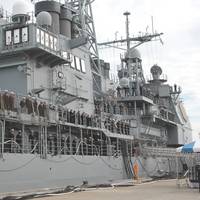
Hand in hand with the digital craze in maritime is the caution of cyber attacks. We live and operate in a complex society. That society would be impossible without modern computers and other information technologies Those technologies have largely been developed piecemeal to address particular issues, and for the most part they have generally achieved their particular goals. Maximum efficiency is gained when multiple technologies are joined to coordinate their work. Computers get smaller and faster, with ever-growing memory. Joining computers together allowed for creation of the internet.
A Definitive Guide to AIS

The world of AIS can be confusing to newcomers and experienced professionals alike. What is AIS? What data does it gather? How can it help my business? Do I need AIS if I don’t have a business? Class A or Class B transponders? Do I actually need it? There’s a plethora of questions from those looking to get the most out of their tracking tools, or from those looking into entering the maritime industry. The following is a comprehensive guide to AIS that covers a wide range of topics from specific AIS units to getting the most out of the data gathered.
Electronic Navigation & Dispute Resolution: Coming of Age

Electronic navigation systems such as GPS, Electronic Chart Displays (ECDIS) and Automatic Identification Systems (AIS) provide great assistance to mariners and significantly contribute to navigational safety. Voyage Data Recorders (VDR) were specifically designed to collect data from these electronic navigation systems and other onboard sensors for use in accident investigation. These systems provide investigators with a wealth of data about a vessel’s movements and status in the moments leading up to an accident.
Navigation Training Delivered aboard EUNAVFOR Flagship
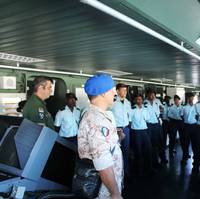
On March 4, 20 trainees from the Basic Training course for the Seychelles Coast Guard took part in a training exercise covering the use of electronic navigation equipment. The training was delivered by Seychelles Coast Guard trainers and EUNAVFOR with support from EUCAP Nestor on board the French EUNAVFOR Flagship Siroco. The trainees received practical and theoretical instruction in how to use equipment such as GPS, AIS, ECDIS, radar and gyrocompass. "This training was very useful," said the Commanding Officer of the Coast Guard, Lt Col Dine.
New Power in the Heart of the Alaskan Beast
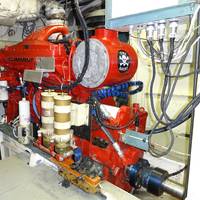
Twenty-two year-old crab boat's faithful Cummins diesel engines replaced with state-of-the-art version. Fans of the popular Discovery Channel series “The Deadliest Catch” thrill at the sight of the 113-foot, black-hulled Time Bandit’s bow rearing out of a cresting wave. Onboard men launch and recover 1000-pound crab pots while chilled Arctic seas wash over the working deck. In the wheelhouse, the crab boat’s skippers Andy or Jonathan Hillstrand monitor the deck crew and the boat’s electronic navigation equipment.
Maritime Cyber Security: Survival at Sea
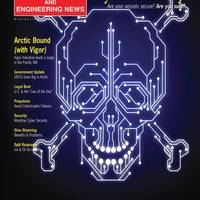
What do we think of when we hear “Survival at Sea”? It usually brings up visions of a ship in a perilous situation confronting some extraordinary circumstances that might be life or death. We are now faced with an even more harrowing scenario- broaching of maritime information including specific details that might encompass company proprietary data as well as details of vessel schedules and particulars. Many of you have heard of recent cyber-attacks including Stuxnet that deliberately…
Shipbuilding in Nova Scotia
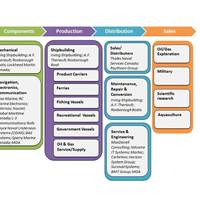
Irving Shipbuilding’s successful C$25 billion bid for the combatant portion of the National Shipbuilding Procurement Strategy (NSPS) illustrates the strength of Nova Scotia shipbuilding industry. Under the program, Irving Shipbuilding, Inc. (ISI) will build six to eight Arctic/Offshore Patrol Ships and 15 Canadian Surface Combatants for the Department of National Defense (DND) over the next 20-30 years. The NSPS contract is in addition to ISI’s contract to build nine mid-shore patrol vessels for the Canadian Coast Guard…
ENav: Improved Training and Auditing Will Enhance Navigation Safety
Modern electronic navigation systems have the potential to improve vessel navigation safety and ruce accidents. The potential of these new systems is unlikely to be realiz, however, if the officers keeping the navigation watch are not fully train and properly qualifi in their use. Thus, fully realizing the potential in electronic navigation will require improv training, a wider spectrum of knowlge across the industry and better procures by vessel owners and managers to assess qualification and proper use. At the same time, as incidents relat to the use of AIS or ECDIS occur, courts are putting owners and managers on notice that such training and monitoring is requir to avoid or limit their liability for accidents.
Electronic Navigation: Improved Training and Auditing Will Enhance Navigation Safety
Modern electronic navigation systems have the potential to improve vessel navigation safety and ruce accidents. The potential of these new systems is unlikely to be realiz, however, if the officers keeping the navigation watch are not fully train and properly qualifi in their use. Thus, fully realizing the potential in electronic navigation will require improv training, a wider spectrum of knowlge across the industry and better procures by vessel owners and managers to assess qualification and proper use. At the same time, as incidents relat to the use of AIS or ECDIS occur, courts are putting owners and managers on notice that such training and monitoring is requir to avoid or limit their liability for accidents.
Chuck’s Boats Build Submarine Handling Tug
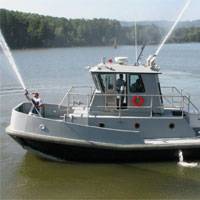
Over the last six years, Chuck's Boat and Drive of Longview, Washington has delivered almost 40 small tugs to the U.S. Navy. They range in size from 19 to 40 ft, are powered by single and twin Cummins engines, and are designed to fulfill missions that include many in-port duties, including moving heavy security booms and docking naval vessels. These hard-working craft have are based on the durable steel hulls that the company has delivered to commercial operators in the logging business for over 40 years.
New Australian Nav Equip Standard
The Australian Transport Council (ATC) of Ministers this month approved the new national safety standard for navigation equipment. The National Standard for Commercial Vessels (NSCV) Part C, Subsection 7C – Navigation Equipment replaces those parts of USL Code Section 13; Miscellaneous Equipment, pertaining to navigation equipment. The National Marine Safety Committee (NMSC) technical team developed the standard in consultation with the marine industry over a two-year period, often covering innovative equipment introduced since the last update of the USL Code in 1984. NMSC’s Acting CEO John Henry noted that much has changed in the field of electronic navigation equipment since the USL Code was published.
Electronic Navigation and Causation
The US Court of Appeals for the Fifth Circuit ruled that failure to train a master on how to properly use electronic navigation equipment does not make the vessel owner fully liable for an allision nor does it prevent the vessel owner from limiting its liability when there is insufficient evidence to prove that such failure to train was the cause of the allision. In the instant case, defendant’s fishing vessel allided with plaintiff’s offshore rig in the Gulf of Mexico. The allision occurred at night, after the master (who was navigating the vessel) turned on the lights on the bridge to examine a defective engine part and conduct related administrative activities. The evidence showed that the lights on the offshore rig were not functioning properly.
Northrop Grumman to Supply Navigation Systems for New Tankers
Northrop Grumman Corporation has received orders to supply a complete package of electronic navigation equipment for ten new tankers being built for the Latvian Shipping Company (LASCO). The orders were awarded to Northrop Grumman’s Sperry Marine business unit. Terms of the agreement were not disclosed. The 51,800-dwt, double-hull tankers, which will be equipped to carry either oil products or chemicals, are being built for LASCO’s Crown Navigation subsidiary at the 3.Maj shipyard in Rijeka, Croatia. Deliveries are scheduled for 2006-2008. Each ship is being fitted with a complete integrated bridge system (IBS), featuring Sperry Marine’s multi-station Voyage Management System, which incorporates an electronic chart display and information system.
Sperry Nav Systems for LASCO Tankers
Northrop Grumman Corporation received orders to supply a complete package of electronic navigation equipment for 10 new tankers being built for the Latvian Shipping Company (LASCO). The orders were awarded to Northrop Grumman’s Sperry Marine business unit. The 51,800-dwt, double-hull tankers, which will be equipped to carry either oil products or chemicals, are being built for LASCO’s Crown Navigation subsidiary at the 3.Maj shipyard in Rijeka, Croatia. Deliveries are scheduled for 2006-2008. Each ship is being fitted with a complete integrated bridge system (IBS), featuring Sperry Marine’s multi-station Voyage Management System, which incorporates an electronic chart display and information system.
Electronic Notes
Petroleos Mexicanos (PEMEX) and Norcontrol IT entered into a three-year maintenance contract that covers the offshore VTMIS system at the Bay of Campeche oilfield located in the Gulf of Mexico off the Yucatan Peninsula. The Bay of Campeche is the largest oilfield in Mexico and the world's largest offshore oil development project. The VTMIS system installed by Norcontrol IT consists of two control centers and seven radar sites, all of which are covered by the maintenance contract. A large capacity, flexible and reliable VTMIS system is required at the Bay of Campeche for several reasons. The coverage area contains between 200-300 vessels per day, all of which have to be monitored to protect the pipelines: Especially important as the bay is only 40-50 m deep in most areas.
LNG Carriers Receive Wynn Marine Retrofit
from around the world. One recent retrofit of window wiper systems has been carried out through Golar Management with Wynn supplying Type D Straight Line wipers to 4 LNG carriers owned by the National Gas Shipping Company of Abu Dhabi. vessels in the series, with the final one to completed later this year. with Golar Management. facility. shipyards, naval fleets, rescue services and commercial outfits. Wiper systems are an integral part of bridge equipment. at sea. Marine. as in this case, a retrofit,” concludes Parker.
PVA:NTSB Cites Nav Problems in Ferry Grounding
The National Transportation Safety Board (NTSB) cited inappropriate navigational procedures and equipment as the result of the 2001 grounding of the New York Fast Ferry's small passenger vessel, the Finest. NTSB listed that the probable cause of the grounding that occurred outside the channel to the Shrewsbury River, Sandy Hook Bay, N.J. was the lack of readily visible fixed navigational aids, as well as the failure of New York Fast Ferry to require the use of installed navigation equipment and to set guidelines for operations in adverse environmental conditions. On January 4, 2001, the Finest, with 258 passengers on board, was en route for the Sandy Hook Bay Marina in Highlands, N.J. after departing Manhattan.







